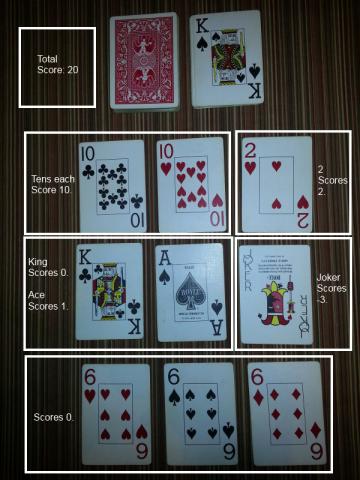Game Makeover: Nines – Traditional Variants
Imperfect Record:
In comparing the rules as I have learned them with what I have found online, it is obvious that I am working from an imperfect record of the original game.
Traditional Game Rules
Most people learn the rules for games from someone else, never have to read the rules, and therefore don’t really know if they are playing the game according to the rules. This lack of rules knowledge is even greater for traditional games where the rules have been “handed down” verbally many times without any reference to the actual rules if indeed they exist. It is interesting to compare rules for the same game with someone who has learned them through a different genetic tree.
Like comparing documents derived through different paths from the same origin, one might reconstruct the original document. Don’t worry, I won’t go through all that, but an interesting side exercise for my Game Makeover of Nines is to compare some rules variations. I located several rules sets online, but for expedience will stick to a comparison of the rules as I learned them (hereafter known as the “JP Document”) to the rules recorded in BGG (hereafter known as the “BGG Document”). Let’s compare and evaluate the variations and maybe speculate a little as to why the variants exist. My assumption is that variations probably represent house rules made over time to tweak the game in different ways to make it shorter, easier, more fun, etc.
Variations
The variations are tabulated below with a color key indicating their relative benefit:
- Positive
- Negative
- Neutral
|
BGG Document |
Comparison |
JP Document |
|
Setup |
||
|
Turn over two cards in different columns. |
JP makes for a quicker hand and some (minor) decisions on placement – mitigating luck. |
Turn over 3 cards and arrange however you want. |
|
Game Play |
||
|
A drawn card may be played face down on the tableau.* |
BGG allows for some deception / bluffing, but with the option of only turning over 1 card at the end, it is minor. |
All cards drawn that are placed in the collection go in face up. |
|
The game is one hand. |
BGG is faster. JP mitigates good/bad luck potential of one hand. |
The game is a series of rounds to a predetermined score. |
|
Final Round |
||
|
Players have the option of turning one card over before their last play.** |
JP allows for greater shift in final round – mitigating luck. (Though potential is still relatively small). Sometimes a set is made with the revealed cards. |
Players turn over all cards once one player has completed their collection. |
|
Scoring |
||
|
Only cards in columns can count as sets. |
JP allows for more sets and 2nd sets require only 2 cards – essentially applies a graduated scoring mechanism. |
Sets can be made in columns and rows. |
|
Aces score 0 points. |
Minor difference. Aces (and 2s) are usually mixed with Kings and Jokers to make low scoring non-sets anyway. |
Aces score 1 point. |
* Not certain if this is only applies to cards drawn from the draw pile.
** Not certain if this is instead of drawing a card.
